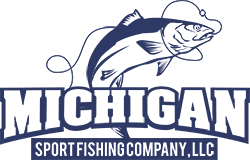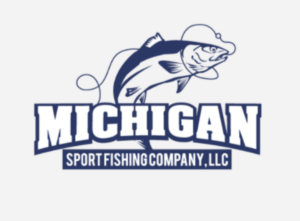
Lake Michigan Coho Salmon: A Great Lakes Success Story
Few fish tell a better story of adaptation and angling excitement than the Coho Salmon of Lake Michigan. Introduced in the 1960s, this Pacific native has become one of the lake’s top predators—and a favorite among sport fishers. But the tale of Lake Michigan Coho salmon is more than just a good catch; it’s a story of ecological balance, innovation, and the enduring appeal of Great Lakes fishing.
A West Coast Fish Makes a Midwestern Home
 Coho Salmon (Oncorhynchus kisutch) are originally from the Pacific Ocean, ranging from Alaska to central California. Their journey to the Midwest began in the mid-20th century when fisheries managers faced a major problem: an overpopulation of invasive alewives in the Great Lakes. These oily baitfish would wash up in massive numbers, littering beaches and disrupting the food chain.
Coho Salmon (Oncorhynchus kisutch) are originally from the Pacific Ocean, ranging from Alaska to central California. Their journey to the Midwest began in the mid-20th century when fisheries managers faced a major problem: an overpopulation of invasive alewives in the Great Lakes. These oily baitfish would wash up in massive numbers, littering beaches and disrupting the food chain.
Enter the Coho Salmon. Scientists from Michigan and surrounding states saw an opportunity to introduce a natural predator that could help control alewife numbers—and provide a boost to sport fishing. In 1966, the first Coho were stocked into the Platte River in Michigan. The results were immediate and impressive: the fish thrived, and anglers quickly took notice.
Life Cycle and Behavior
 Lake Michigan’s Coho Salmon follow a life cycle similar to their Pacific ancestors. After spending about 18 months in the lake, young salmon begin a feeding frenzy, bulking up on alewives and other forage fish. By the time they reach two to three years old, they start their journey back to tributary rivers to spawn.
Lake Michigan’s Coho Salmon follow a life cycle similar to their Pacific ancestors. After spending about 18 months in the lake, young salmon begin a feeding frenzy, bulking up on alewives and other forage fish. By the time they reach two to three years old, they start their journey back to tributary rivers to spawn.
Unlike in their native Pacific rivers, many of Lake Michigan’s spawning runs are artificial—fed by hatcheries rather than natural reproduction. Still, these runs are a spectacle, especially in late summer and early fall when thousands of silvery fish turn up rivers, their bodies darkening and hooked jaws forming as they prepare to spawn.
Angling for Coho: Spring and Fall Favorites
Fishing for Coho on Lake Michigan is a seasonal treat. Spring is prime time, when young fish school close to shore and are relatively easy to catch from piers and boats. Anglers use spoons, crankbaits, and even flies to target these aggressive feeders.
In the fall, mature Coho head into tributaries to spawn, offering another chance for river anglers to tangle with these powerful fish. Their fight is fast and furious—short bursts of energy that make them a challenge on light tackle.
 More Than Just a Game Fish
More Than Just a Game Fish
Beyond their value to anglers, Coho Salmon play an important role in the lake’s food web. While their introduction was originally to manage alewives, Coho populations are now carefully balanced with other species like Chinook salmon, lake trout, and steelhead. Fisheries biologists monitor these populations closely to maintain a healthy ecosystem and a sustainable fishery.
A Michigan Legacy
Nearly 60 years after their introduction, Coho Salmon remain a symbol of successful fishery management. They’ve turned Lake Michigan into a premier destination for sport fishing, bolstered local economies, and offered countless stories of “the one that got away.”
Whether you’re casting from a pier in April or drifting a fly in an autumn river, catching a Coho in Lake Michigan isn’t just fishing—it’s participating in a living legacy.
Call to get in on the excitement today!
- Informational
- May 17, 2025






